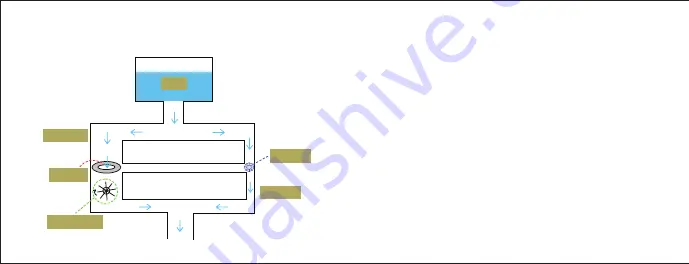
1. The water in the pool flows downward, first through the thick pipe,
then the thin pipe.
2. Strobe A, located in the thick pipe, is controlled by the water flow
in the thin pipe; the thin pipe is controlled by strobe B.
3. If there is no water flow in the thin pipe, then the strobe located in
the thick pipe will close. The greater the water flow in the thin pipe,
the wider strobe A opens up. Since strobe A controls water flow
through the thick pipe, water flow will increase when strobe A
opens. This is the function of the transistor.
4. The water flow in the thick pipe determines the speed of the water
wheel – increased water flow will make the waterwheel spin faster.
The pool represents the coin cell battery; the waterwheel represents
the vibration motor; strobe B represents the photodiode. Stronger
surrounding light will cause the vibration motor to run faster.
These working principles are illustrated in the diagram below.
Water Wheel
Strobe A
Thick Pipe
Strobe B
Thin Pipe
Pool


















